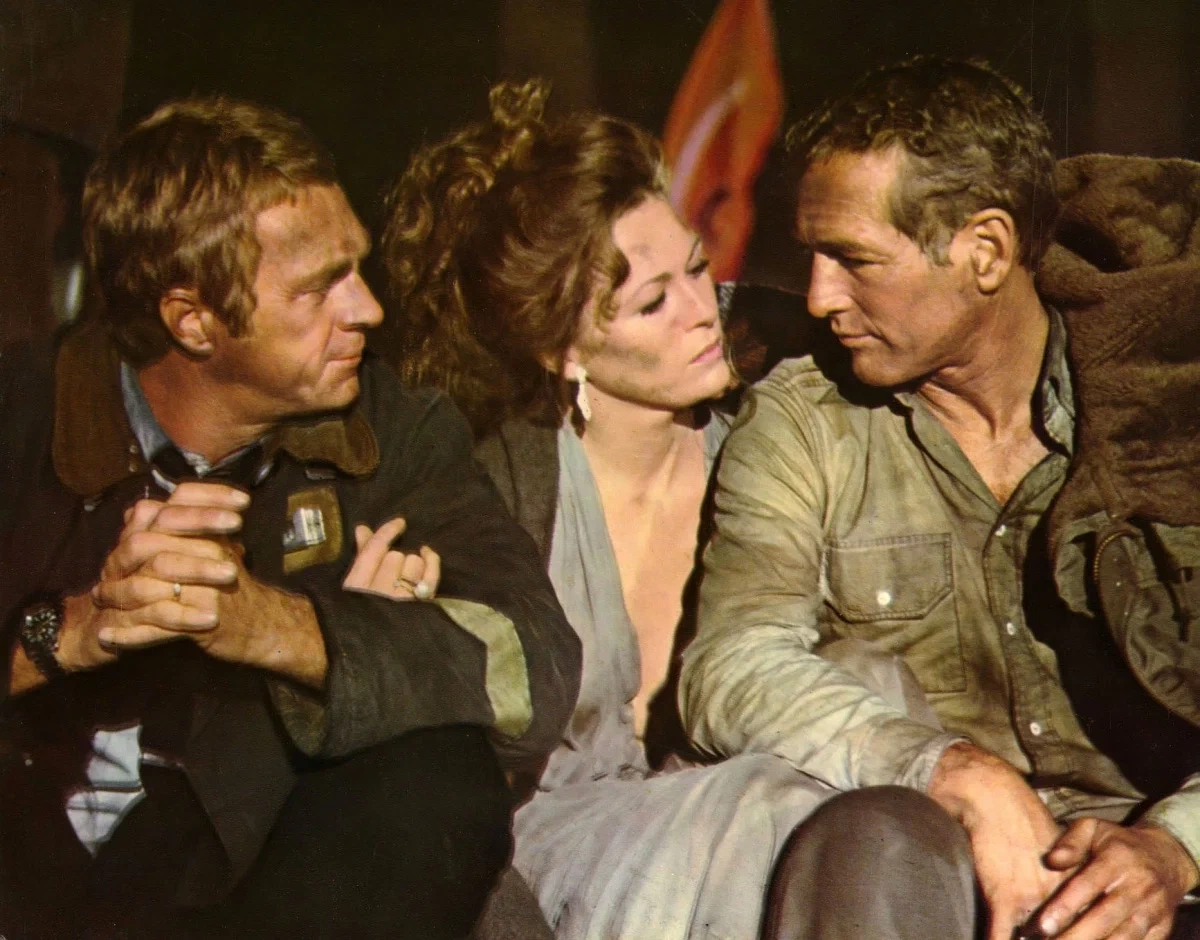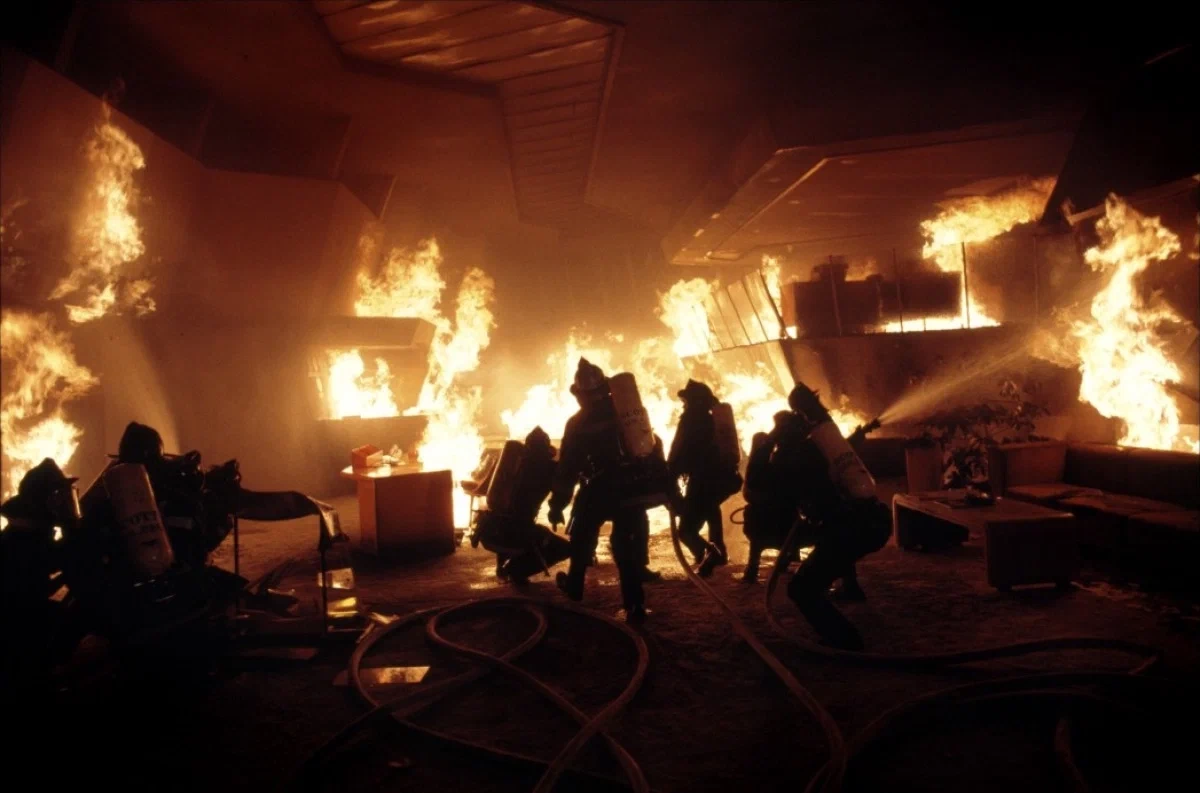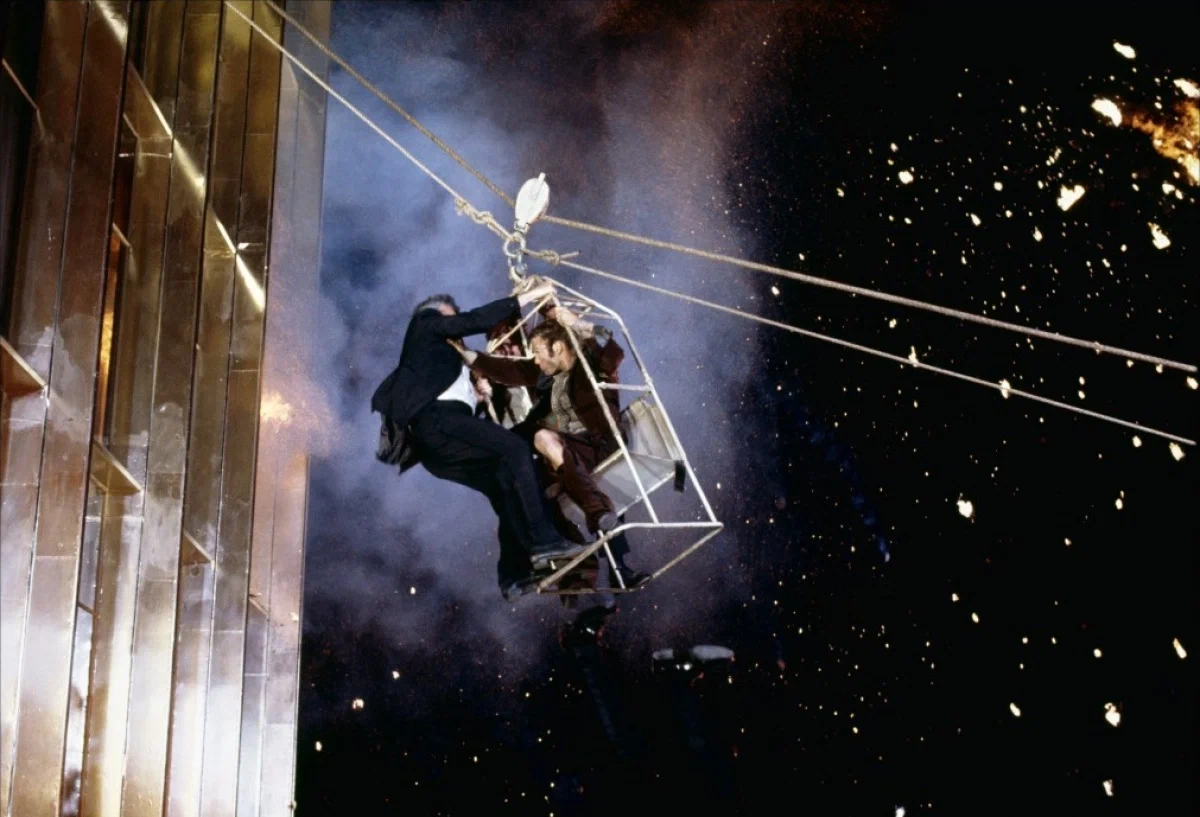The Towering Inferno 🔥🏙️
A Landmark in Disaster Cinema 🎬
When The Towering Inferno premiered in 1974, audiences had never seen anything quite like it. Before this film, Hollywood had already flirted with disaster stories, but never with such scale, realism, and intensity.
Director John Guillermin, later known for his work on King Kong (1976) and Death on the Nile (1978), orchestrated a gripping spectacle that combined terror, drama, and human courage into nearly three hours of breathtaking cinema.
The movie presents one of the most terrifying scenarios imaginable: a skyscraper engulfed in flames, turning the skyline into a blazing nightmare. With an epic runtime, it balances disaster spectacle with intimate human stories, keeping viewers on edge while exploring how ordinary people react under extraordinary circumstances.

From Page to Screen 📚➡️🎥
The inspiration for the film came from two novels—The Glass Inferno and The Tower. Instead of choosing one, Warner Bros. and 20th Century Fox combined forces to adapt elements of both into a single ambitious project.
This collaboration was unusual at the time but proved fruitful: the studios shared both the expenses and the profits, ensuring the production could reach a truly grand scale.
With a hefty $14 million budget (enormous for the 1970s), the filmmakers spared no effort. Five full-scale floors of the fictional skyscraper were constructed for the production, allowing for immersive and realistic action sequences.
State-of-the-art techniques for the time—rear projection, rotoscoping, wandering masks, and large-scale model work—were all employed to create the illusion of a towering inferno swallowing an entire building.
The Stars Who Lit the Screen 🌟
One of the film’s greatest strengths is its star-studded cast. Hollywood legends such as Paul Newman, Steve McQueen, William Holden, Faye Dunaway, Fred Astaire, Richard Chamberlain, Jennifer Jones, and even O.J. Simpson appeared in the ensemble.
Newman, playing the architect of the ill-fated tower, and McQueen, portraying the determined fire chief, gave powerhouse performances. Their dynamic added weight and authenticity to the film—viewers could believe in their struggle and root for their survival. The ensemble cast reflected a wide spectrum of human behavior in crisis: selflessness, cowardice, leadership, and betrayal.

Human Drama Amidst the Flames 👥🔥
Disaster films often rely on spectacle alone, but The Towering Inferno went further. By presenting a microcosm of society trapped within the skyscraper, the story explored how different personalities react when the stakes are life and death.
Some characters rise to heroism, risking everything for strangers. Others show their true, selfish colors, endangering those around them. This range of responses gives the film an emotional depth that elevates it beyond mere visual spectacle. Watching these human stories unfold against a backdrop of fire and destruction makes the suspense far more powerful.
Groundbreaking Effects and Recognition 🏆
Even today, the film’s visual effects hold up remarkably well. The flames, explosions, and collapsing structures feel alarmingly real, a testament to the practical ingenuity of the crew. Unlike modern CGI-heavy productions, every effect was painstakingly crafted with models, real fire, and creative camera work.
The Academy took notice: The Towering Inferno won three Oscars—for Best Cinematography, Best Editing, and Best Original Song. These accolades were well-deserved, cementing the film’s place as both a technical achievement and an artistic triumph.

Legacy of Fire 🔥🏆
By pushing the boundaries of what a disaster film could achieve, The Towering Inferno raised the bar for the genre. Its combination of large-scale spectacle, human drama, and A-list talent influenced countless disaster movies that followed. Even today, nearly five decades later, it remains gripping, believable, and emotionally resonant.
It’s more than just a film about fire—it’s a study of humanity under pressure, a cinematic landmark, and a powerful reminder of both the fragility and resilience of human life.
Final Score: 9/10.
Close